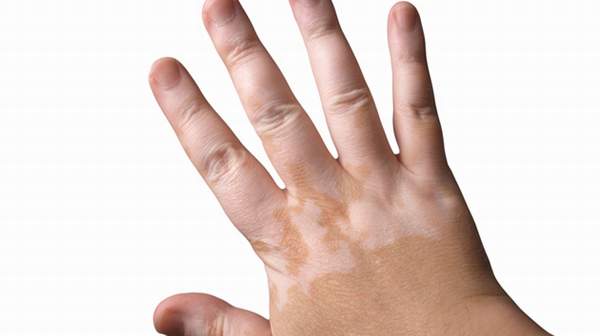What's in this article?
Vitiligo is a condition that causes depigmentation of parts of the skin. It occurs when melanocytes, the cells responsible for skin pigmentation, die or are unable to function. The cause of vitiligo is unknown, but research suggests that it may arise from autoimmune, genetic, oxidative stress, neural, or viral causes. The incidence worldwide is less than 1%. The most common form is non-segmental vitiligo, which tends to appear in symmetric patches, sometimes over large areas of the body.
The fact about Vitiligo
- Vitiligo is a disease in which the pigment cells of the skin, melanocytes, are destroyed in certain areas.
- Vitiligo results in depigmented, or white, patches of skin in any location on the body.
- Vitiligo can be focal and localized to one area, or it may affect several different areas on the body.
- The exact cause of vitiligo is unknown, although most experts believe that it is an autoimmune condition in which the body’s immune system mistakenly attacks and destroys certain cells within the body.
- Most people who have vitiligo will develop the condition prior to age 40; about half develop it before age 20.
- Vitiligo tends to run in families.
- Vitiligo is sometimes associated with other medical conditions, including pernicious anemia.
- Vitiligo is not painful and does not have significant health consequences; however, it can have emotional and psychological consequences.
- Some medical treatments can reduce the severity of the condition, but it cannot be cured.
Causes of Vitiligo
Melanin is the pigment that gives the skin its characteristic color. Vitiligo is caused by a loss of pigment in the skin, due to destruction of pigment-forming cells known as melanocytes. The exact cause of the destruction of these cells is not known. One possible explanation might be that the body’s immune system destroys the cells, as in other autoimmune conditions. Although vitiligo affects all races equally, it is more noticeable in dark-skinned people.
Symptoms of Vitiligo
Symptoms of vitiligo include an often rapid pigment loss on several areas of the skin. The initial appearance of the white patches can be followed by a stable period without any progression of the condition. Later on, further cycles of pigment loss and stability may be observed. Vitiligo commonly affects areas on the skin that are exposed to sun, body folds (such as armpits), previous sites of injury, areas around moles, or areas around body openings. It is rare for pigment to return once the white patches have developed. Vitiligo can also affect the eyelids and hair.
Who is affected by vitiligo?
About 0.5 to 1 percent of the world’s population, or as many as 65 million people, have vitiligo. In the United States, 1 to 2 million people have the disorder. Half the people who have vitiligo develop it before age 20; most develop it before their 40th birthday. The disorder affects both sexes and all races equally; however, it is more noticeable in people with dark skin.
Vitiligo seems to be somewhat more common in people with certain autoimmune diseases, including hyperthyroidism (an overactive thyroid gland), adrenocortical insufficiency (the adrenal gland does not produce enough of the hormone called corticosteroid), alopecia areata (patches of baldness), and pernicious anemia (a low level of red blood cells caused by the failure of the body to absorb vitamin B12). Scientists do not know the reason for the association between vitiligo and these autoimmune diseases. However, most people with vitiligo have no other autoimmune disease.
Vitiligo may also be hereditary; that is, it can run in families. Children whose parents have the disorder are more likely to develop vitiligo. In fact, 30 percent of people with vitiligo have a family member with the disease. However, only 5 to 7 percent of children will get vitiligo even if a parent has it, and most people with vitiligo do not have a family history of the disorder.
Diagnosis and Treatment of Vitiligo
Your doctor can usually make the diagnosis of vitiligo during a physical exam. There is no known way to prevent or cure vitiligo. However, several methods, including cosmetics, re-pigmentation using UV light therapy, corticosteroid creams, depigmentation of unaffected skin areas, and skin grafting, can be used to improve the appearance of skin severely affected by vitiligo.









Thanks you for whole lot of information. There are lot of products that promise to cure the disease but natural products are the best choice to beat Vitiligo.